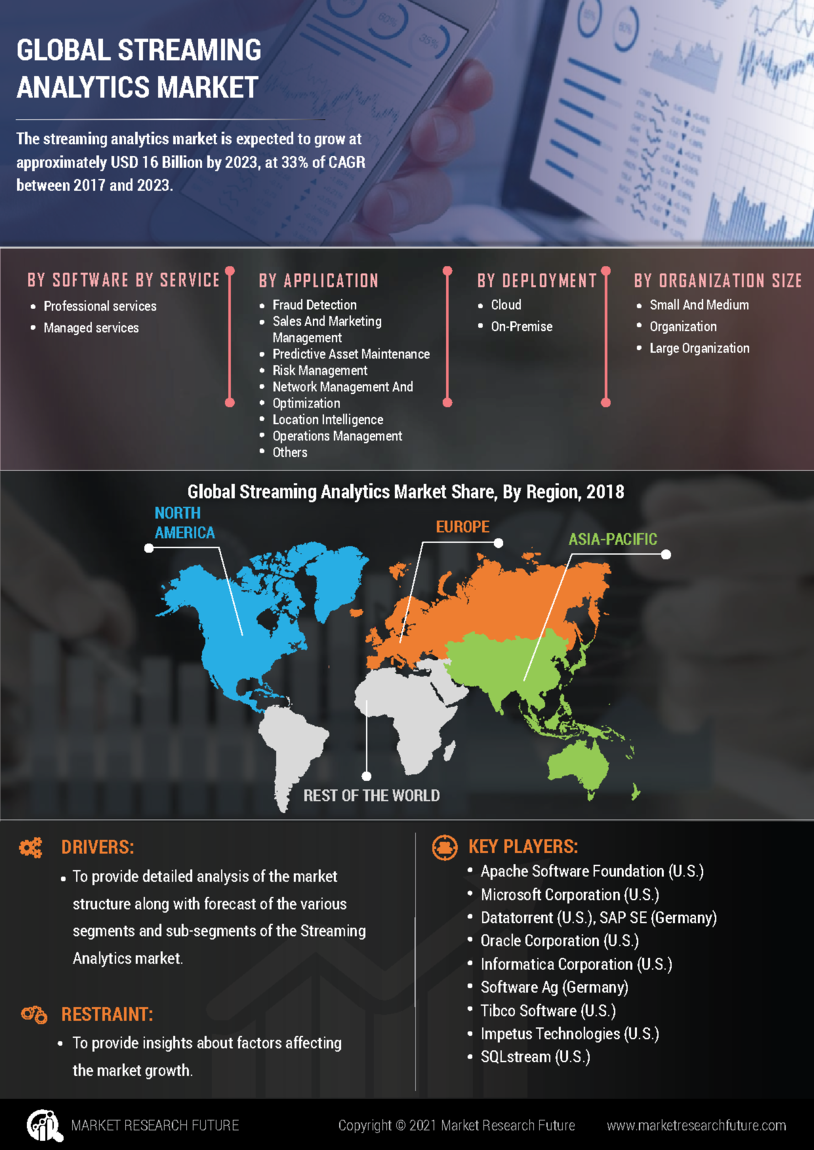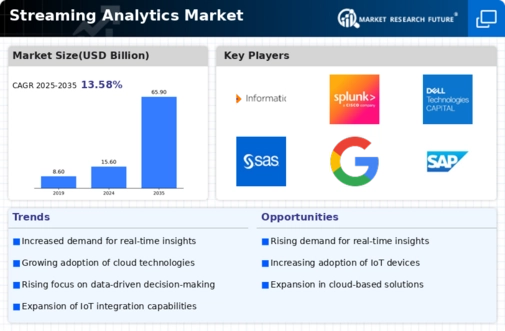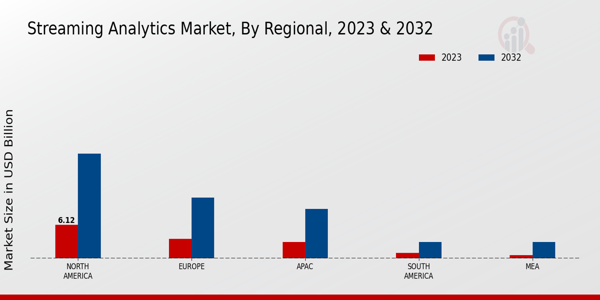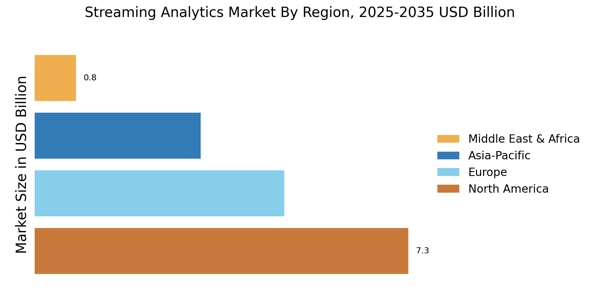Adoption of Cloud-Based Solutions
The transition towards cloud-based solutions is a pivotal driver in the Streaming Analytics Market. Organizations are increasingly migrating their data analytics operations to the cloud, which offers scalability, flexibility, and cost-effectiveness. The cloud enables businesses to process vast amounts of streaming data without the need for extensive on-premises infrastructure. Recent data indicates that the cloud segment of the streaming analytics market is expected to grow at a rate of 30% annually, as companies seek to leverage cloud capabilities for enhanced data accessibility and collaboration. This shift not only streamlines operations but also facilitates the integration of advanced analytics tools, thereby enriching the overall value proposition of streaming analytics.
Growing Importance of Customer Experience
In the Streaming Analytics Market, the growing emphasis on customer experience is a key driver. Organizations are leveraging streaming analytics to gain insights into customer behaviors and preferences in real-time. This capability allows businesses to tailor their offerings and improve customer engagement, ultimately leading to increased loyalty and revenue. Recent surveys indicate that companies utilizing streaming analytics for customer experience enhancements report a 20% increase in customer satisfaction scores. As competition intensifies across various sectors, the ability to deliver personalized experiences through real-time data insights is becoming a crucial differentiator, thereby propelling the growth of the streaming analytics market.
Regulatory Compliance and Data Governance
The Streaming Analytics Market is increasingly influenced by the need for regulatory compliance and robust data governance frameworks. Organizations are required to adhere to various data protection regulations, which necessitate the implementation of effective data management practices. Streaming analytics solutions are being adopted to ensure compliance with these regulations by providing real-time monitoring and reporting capabilities. The market for compliance-driven analytics is projected to grow at a rate of 15% annually, as businesses seek to mitigate risks associated with data breaches and non-compliance penalties. This trend highlights the critical role of streaming analytics in fostering a culture of accountability and transparency within organizations.
Emergence of Advanced Analytics Techniques
The Streaming Analytics Market is witnessing the emergence of advanced analytics techniques, such as predictive and prescriptive analytics. These methodologies allow organizations to not only analyze historical data but also forecast future trends and prescribe actions based on real-time insights. The integration of machine learning algorithms into streaming analytics platforms is enhancing the accuracy and efficiency of data processing. As businesses increasingly rely on data-driven strategies, the demand for advanced analytics is expected to grow significantly. Market projections suggest that the segment focusing on advanced analytics within the streaming analytics market could account for over 40% of total market revenue by 2026, underscoring its critical role in shaping the industry.
Increasing Demand for Real-Time Data Processing
The Streaming Analytics Market is experiencing a surge in demand for real-time data processing capabilities. Organizations are increasingly recognizing the value of immediate insights derived from data streams, which can enhance decision-making processes. According to recent estimates, the market for streaming analytics is projected to reach USD 30 billion by 2026, reflecting a compound annual growth rate of approximately 25%. This growth is driven by the need for businesses to respond swiftly to market changes and customer behaviors. As industries such as finance, retail, and telecommunications adopt streaming analytics solutions, the industry is likely to witness a proliferation of innovative applications that leverage real-time data for competitive advantage.



















Leave a Comment